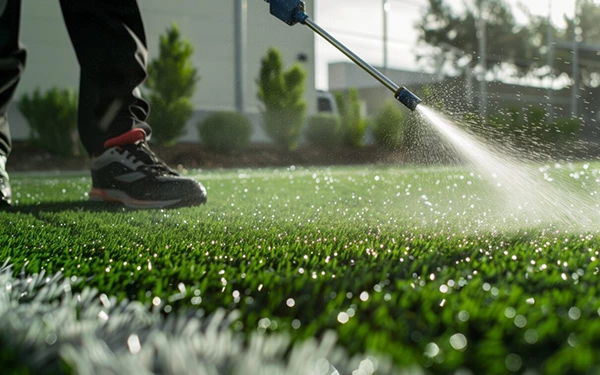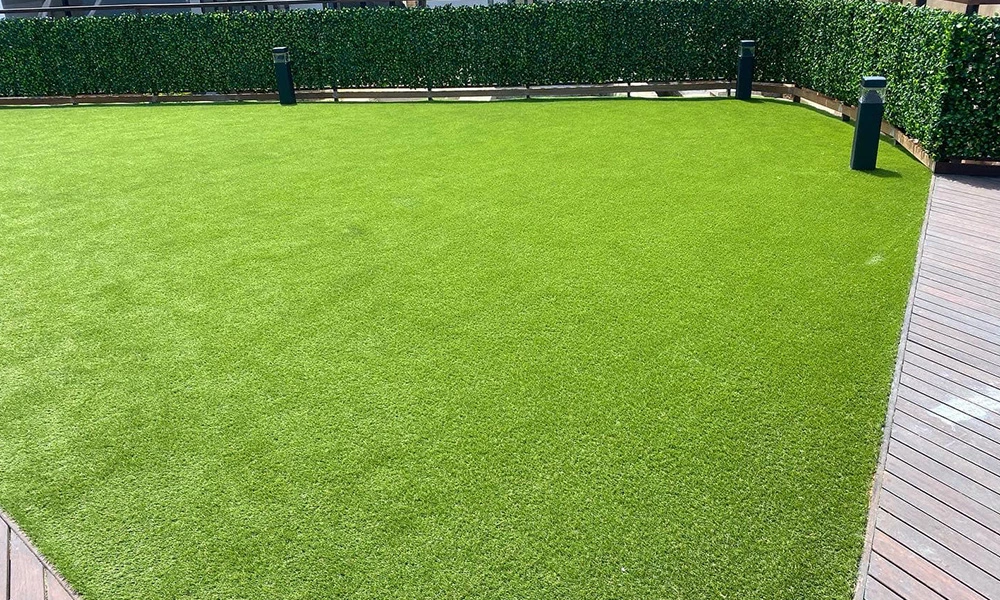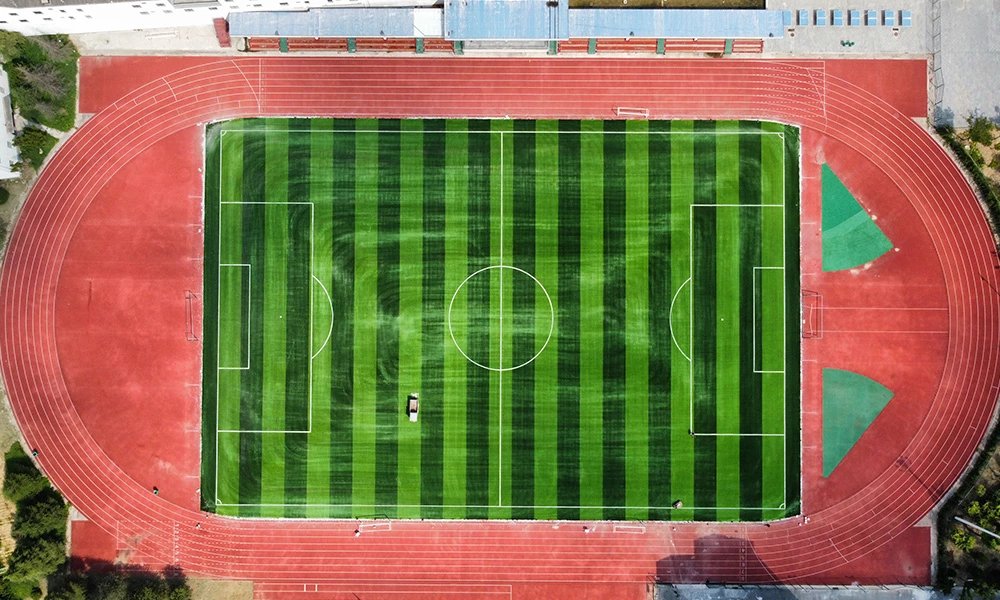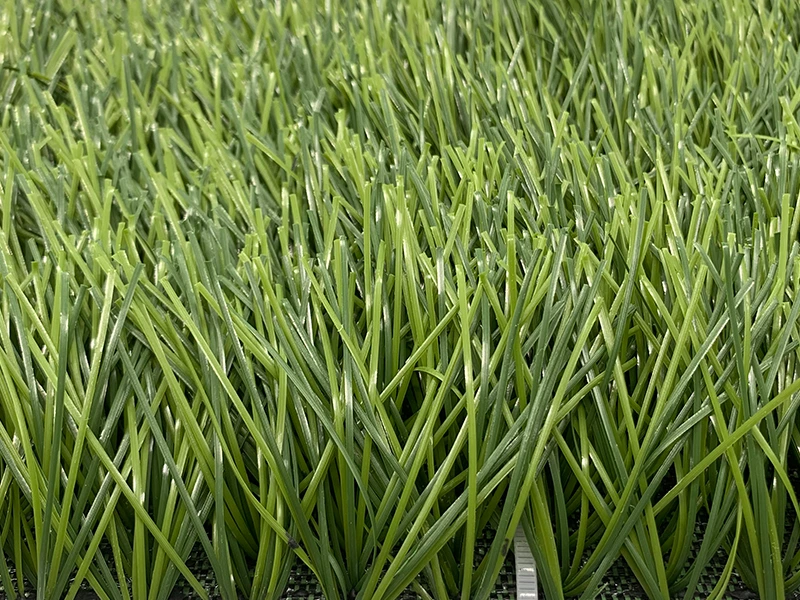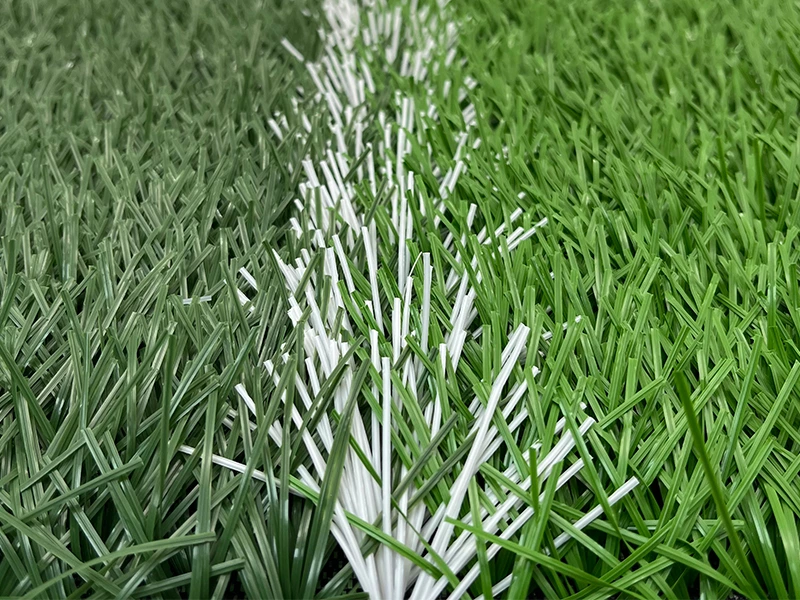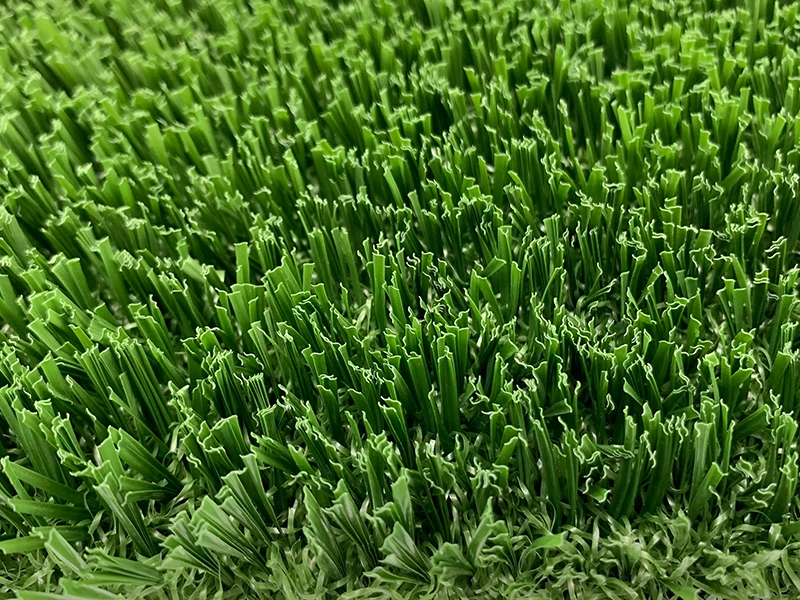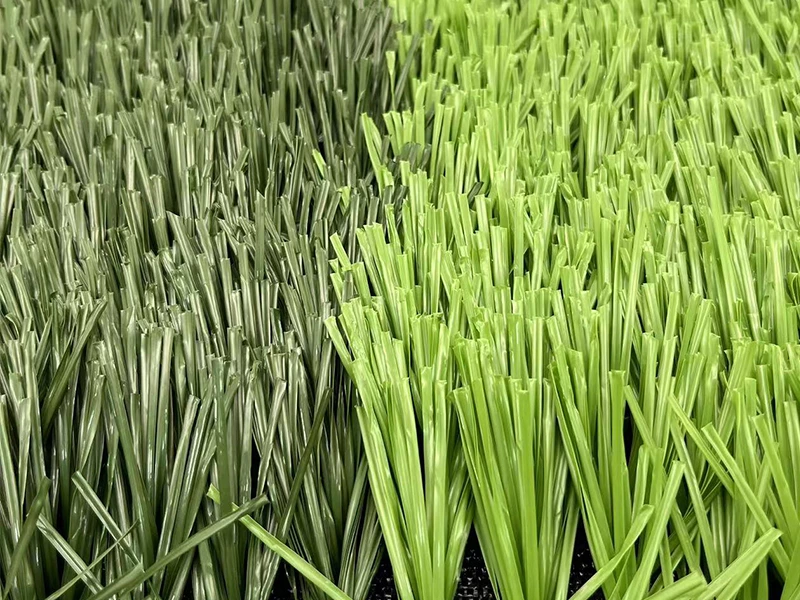Does water stay on artificial grass?
With the widespread use of artificial turf in sports venues, courtyard landscapes and public spaces, people's attention to its performance has continued to increase. Among them, "whether it is easy to accumulate water" has become a common question.
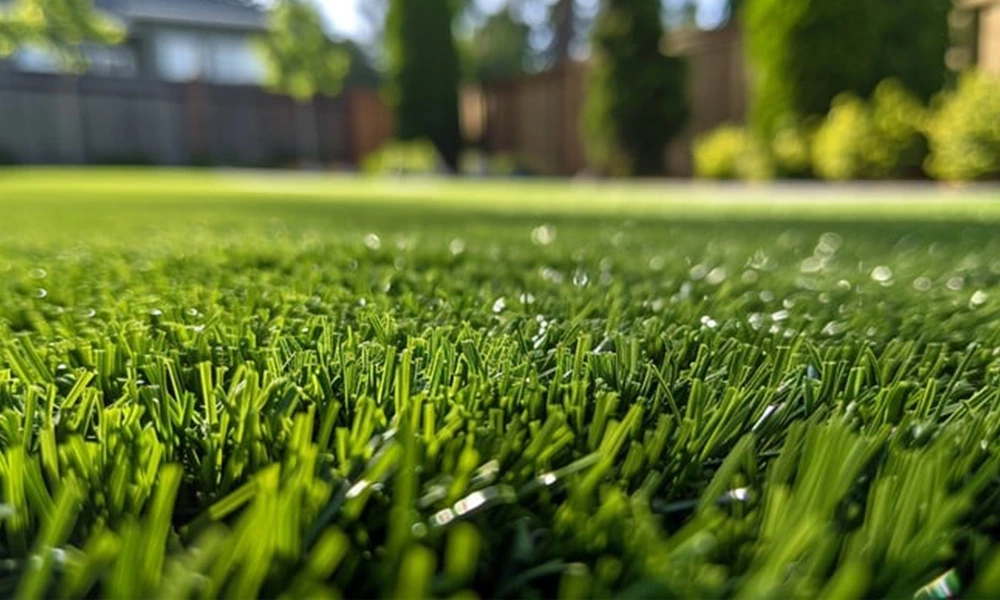
The structure of artificial turf determines its drainage capacity
To understand whether artificial turf will accumulate water, you first need to understand its basic structure. Standard artificial turf consists of three layers:
The surface grass fiber layer: simulates the appearance and touch of natural grass, allowing water to penetrate quickly;
The middle filling layer: generally quartz sand and rubber particles, which help stabilize the grass fibers and promote water flow;
The bottom base fabric layer: usually made of highly permeable polypropylene material, with dense drainage holes distributed on it.
These three layers work together to ensure that rainwater quickly penetrates the lawn and flows into the foundation drainage system below if the design is reasonable.
Construction quality is the key to drainage performance
Even if the lawn itself has good drainage performance, if the foundation is not prepared in place, it is easy to accumulate water. Common construction problems include:
The ground is not sloped, so rainwater cannot flow away naturally;
The cushion layer is not compacted enough, forming a water retention layer;
The drainage ditch design is unreasonable, resulting in blockage or backflow of the drainage system.
Therefore, choosing an experienced construction team to ensure that the base is compacted and an effective drainage slope is laid is the fundamental guarantee to avoid water accumulation.
Material quality directly affects drainage efficiency
The drainage effect of artificial turf is also affected by the quality of the material. High-quality materials are as follows:
The turf backing glue has uniform openings and strong water permeability;
The filling particles are pure and the particle size is moderate to avoid the filler clogging the drainage holes;
The base fabric has good water permeability and tear resistance, and will not deform after long-term use.
Poor-quality materials are often easy to absorb water, break or block the drainage channel, resulting in frequent water accumulation.
Influence of extreme weather and environmental factors
Even if the design is reasonable and the materials are excellent, short-term water accumulation may still occur under extreme weather conditions such as heavy rain. This kind of water accumulation is often temporary and will be discharged quickly as the rain ends and the natural seepage of the ground resumes.
In addition, if the lawn is in a low-lying area or the surrounding drainage system is not smooth, it may also cause local water retention. Therefore, when designing a lawn system, the terrain and drainage capacity of the entire site should be considered.
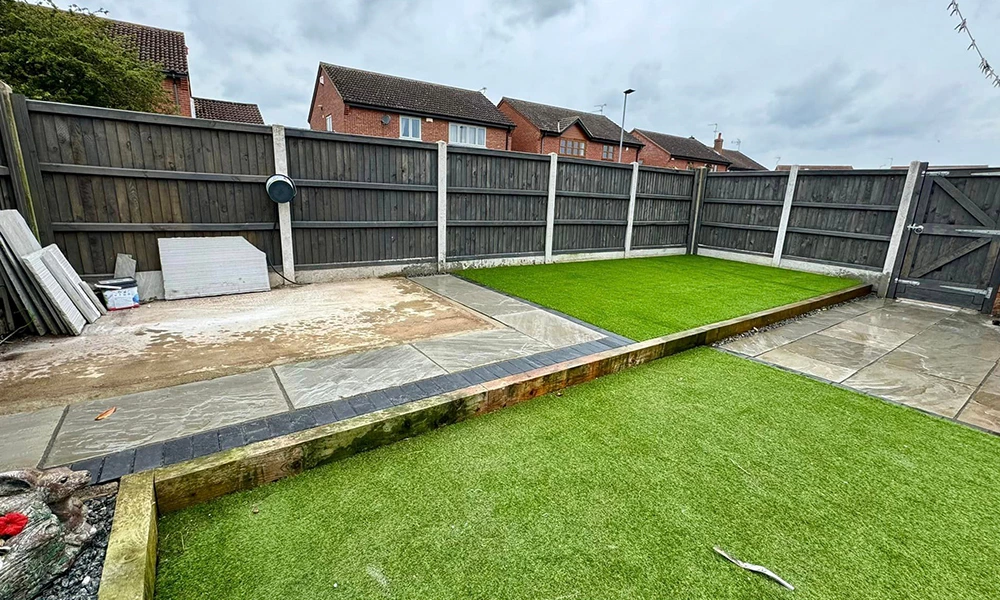
Daily maintenance extends the life of the drainage system
Even the best drainage system needs maintenance. In long-term use, the following measures can effectively prevent water accumulation:
Regularly clean up debris on the surface and edges of the lawn to prevent clogging of the drainage holes;
Add filling particles to maintain permeability;
Check whether the drainage ditch or drainage outlet is unobstructed;
Check for settlement or cracks in the bottom layer of the lawn and repair them in time.
Good daily management not only helps to improve the lawn user experience, but also extends the service life of the overall system.
